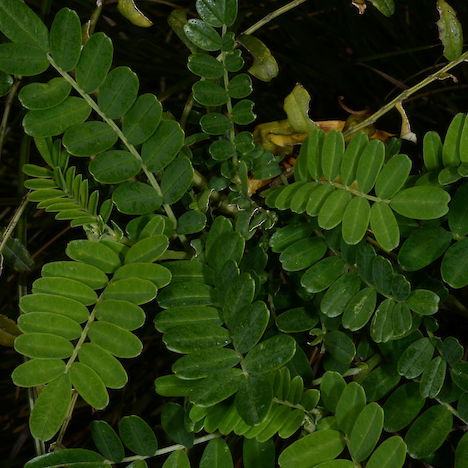Threat category:
Threatened: Nationally Critical?Regions:
AucklandDistribution:
Mainly eastern North Island
Key Features
- Branched shrub to 2 m tall with small (1.5-2.5 cm), paired leaflets and showy, red, hanging flowers that develop into 5-7 cm long pods.
- Leaves are grey-green to olive green and dull.
- Clianthus maximus is larger (to 6 m tall) with larger, glossy and green leaflets.
Distribution and Habitat
- North Island, known only from Kaipara Habrour. Historically more widespread. .
- Lowland disturbed and successional sites such as bluffs, coastal cliffs, river and lake margins and shrublands.
Threats
- Browsing animals, including introduced mammals, snails and slugs.
- Habitat modification and loss, including natural succession to forest.
- Catastrophic events such as flood, landslide.
- Competition with exotic weeds.
Management Opportunities
- Survey for new locations.
- Mark known sites.
- Reintroduction to appropriate sites.
- Protection of habitat.
- Protection from browsing animals.
- Ensure that forest owners are aware of potential habitats and can recognise the species.
Monitoring Options
- Check existing populations.
- Report new locations to DOC, NZPCN.
Further Information and Support
- New Zealand Plant Conservation Network (NZPCN). http://www.nzpcn.org.nz
- Pest control - Department of Conservation, Regional Councils.
- References
- Dopson et al. (1999). The conservation requirements of New Zealand’s nationally threatened vascular plants. Threatened Species Occasional Publication 13. Department of Conservation, Wellington.
- Wilson & Given (1989). Threatened plants of New Zealand. DSIR Publishing, Wellington.
- Peter de Lange, Peter Heenan, David Norton, Jeremy Rolfe and John Sawyer (2010). Threatened Plants of New Zealand. Canterbury University Press, Christchurch. 472 pp.




